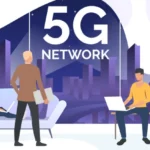
Quantum computing is rapidly advancing, presenting transformative opportunities and significant security challenges across industries. One of the most profound impacts will be on media encryption and delivery, where safeguarding digital content against emerging threats is paramount.
While these challenges seem daunting, they also open up avenues for beneficial innovation. For those seeking regular updates and in-depth analysis on the intersection of quantum technology and cybersecurity, Chris Robino’s tech insights deliver unmatched expertise on evolving trends in this rapidly developing field. Understanding the profound influence quantum technologies will have on content security is essential.
As digital media consumption grows and expands globally through streaming, downloads, and cloud-based applications, the need for robust and future-proof encryption strategies to defend against advanced computational attacks becomes increasingly urgent. Companies investing in digital media must keep up with threats and opportunities to maintain customer confidence and legal compliance in an era of fast-paced innovation.
Key Takeaways
- Quantum computing is reshaping the landscape of media encryption and delivery with both disruptive threats and advanced security opportunities. The technology’s progress is forcing media organizations to rethink how they approach digital content security, given its potential to break conventional encryption.
- Existing encryption systems may become vulnerable; proactive adoption of quantum-safe solutions is essential for content protection. As quantum research accelerates, the window for transition is growing narrower, making early adoption an important factor for sustainability and security resilience.
- Emerging technologies like Quantum Key Distribution (QKD) pave new paths for secure media transmissions. Implementing QKD enables media companies to leverage quantum mechanics as a defense instead of a threat, fundamentally changing security paradigms.
- Media organizations should conduct regular audits and monitor advancements in post-quantum cryptography to maintain a robust defense. Constant vigilance and adaptation are required in such a rapidly shifting technological landscape.
Understanding Quantum Computing
Quantum computers operate using qubits—quantum bits that, unlike traditional binary bits, can exist in multiple states simultaneously through superposition. This unique characteristic, combined with entanglement—a phenomenon where qubits become intricately linked—enables quantum machines to solve problems currently considered impractical for even the fastest classical supercomputers. Unlike a classical bit, which can only be a 0 or a 1 at a given time, a qubit can represent 0, 1, or both at once, exponentially increasing computational power for specific tasks.
This leap in computational performance is poised to disrupt encryption models that form the backbone of secure media delivery today, and it is precisely this exponential increase in power has heightened concerns across industries that depend on advanced cryptography.
With quantum algorithms tackling mathematical problems far faster than imaginable, even long-standing security measures built to withstand decades of brute-force attacks may become obsolete in a much shorter timeframe. Understanding how quantum computing changes encryption rules is the first step to creating new defenses strong enough to withstand tomorrow’s threats.
Current Media Encryption Methods
Today’s media landscape relies largely on cryptographic algorithms such as RSA and Advanced Encryption Standard (AES) to protect content during storage and transmission. These encryption techniques leverage mathematical complexities that would take classical computers thousands—or even millions-of years to break.
RSA relies on the difficulty of factoring large prime numbers, while AES secures data blocks using key-based permutations and substitutions. Their reliability has established the foundation for digital rights management, streaming security, and comprehensive content protection, making them the gold standard in media content security.
Content owners and distributors have trusted these algorithms for decades, developing intricate digital rights management frameworks, secure streaming protocols, and anti-piracy systems based on their strength. However, even the most sophisticated contemporary encryption relies upon the current limits of classical computation—a limit quantum computing promises to shatter.
The Quantum Threat to Existing Encryption
The rise of quantum computing introduces a formidable risk to traditional encryption methods. Algorithms like Shor’s algorithm allow quantum machines to factor large numbers exponentially faster than their classical counterparts, thereby threatening the integrity of widely adopted systems such as RSA. AES, though more resilient, is still vulnerable to quantum-enhanced brute force attacks if quantum computers become powerful enough and are reliably scaled up.
Should sufficiently powerful quantum computers become widely accessible, content protected under existing standards could become vulnerable to rapid decryption and unauthorized distribution. This threat has made the so-called “quantum apocalypse” a top concern in the global cybersecurity community, as it threatens not only media ownership but also consumer privacy and the very foundation of internet trust.
For a comprehensive overview of these emerging risks, consult published briefings by Forbes Technology Council. Some experts estimate that data intercepted now and stored for future decryption—known as “harvest now, decrypt later” attacks—may become readable once quantum computers reach critical strength. This adds a new layer of urgency to developing quantum-resistant systems as soon as possible.
Post-Quantum Cryptography: A New Frontier
Cryptographic research has accelerated efforts to develop algorithms resilient to quantum attacks. Post-quantum cryptography focuses on lattice-based, hash-based, and multivariate polynomial approaches, which quantum machines cannot easily overcome using known algorithms.
Strong candidates from these fields offer protection against classical and quantum threats, providing a bridge to a safer digital future. The National Institute of Standards and Technology (NIST) continues to lead this charge, vetting and standardizing quantum-resistant encryption methods suitable for wide-scale industry adoption.
Their multiyear process includes rigorous evaluation for performance, implementability, and genuine quantum-resilience. As post-quantum cryptography matures, it promises a critical lifeline, enabling secure communications even as quantum capabilities advance, and driving a new category of hardware and software tools tailored for the next generation of secure content delivery.
Quantum Key Distribution: Enhancing Media Security
Quantum Key Distribution (QKD) introduces a new approach to securing media transmissions. Instead of relying on the computational difficulty of traditional encryption, QKD employs quantum mechanics to generate and exchange encryption keys.
The fundamental principle is that any attempt to eavesdrop or intercept the quantum keys would irreversibly change their state, alerting parties to a breach. This technique leverages the laws of quantum physics—specifically, the “no-cloning” theorem, which makes copying unknown quantum states impossible.
QKD holds the potential to make live broadcasts, cloud-based delivery, and streaming platforms nearly immune to undetected interception, marking a significant evolution in secure media transmission. Real-world demonstrations of QKD in networks show it can coexist with standard optical fiber infrastructure, furthering its case as a realistic, albeit challenging, solution for tomorrow’s high-value media content security.
Implications for Media Delivery Systems
The transition to quantum-resistant technologies will reshape the operational fabric of content delivery networks (CDNs) and online streaming providers. Implementing quantum-safe algorithms and QKD protocols necessitates a technological shift and an organizational one, requiring new skills, partnerships, and investments. Real-world tests by several major telecoms have illustrated both the promise and the practical challenges of QKD deployment in complex, high-traffic environments.
The process involves technical hurdles, such as ensuring compatibility and avoiding bottlenecks, and also requires dynamic coordination between vendors, platform providers, and legal stakeholders. Firms must prioritize interoperability while closely monitoring compliance and emerging best practices to retain customer trust, especially as new data privacy laws intersect with encryption developments. Successful adoption of quantum-resistant technologies will rely on industry standards, transparent migration plans, and effective risk management. Proactively managing these factors will give organizations a distinct competitive advantage as trust and security become paramount to consumer decision-making.
Preparing for a Quantum Future
Steps Media Organizations Should Take
- Audit existing systems for legacy or vulnerable encryption protocols, identifying areas at highest risk for quantum-based attacks. Regularly updating inventories of protected assets and evaluating third-party vendor security is essential for full-spectrum risk mitigation.
- Pilot and implement standardized post-quantum cryptographic solutions as they become available, ensuring a phased but decisive migration. Testing in controlled, real-world environments can reveal practical integration issues before going live at scale.
- Evaluate the infrastructure and cost implications of Quantum Key Distribution, particularly for high-value and live event transmissions. Effective deployment of QKD requires thorough feasibility studies and potential upgrades to existing network hardware.
- Invest in ongoing training for IT staff, equipping teams with the knowledge required to deploy and maintain post-quantum systems. Continued education and workforce development will improve response readiness as new threats and solutions emerge.
- Stay engaged with initiatives from organizations like NIST to ensure early compliance with emerging standards and certifications. Proactive involvement helps organizations track the latest breakthroughs, maintain legal compliance, and minimize migration costs.
Conclusion
Quantum computing is ushering in a new media security era, where old assumptions are upended and innovations must be swiftly adopted. While quantum-enabled threats to current encryption systems pose serious concerns, the emergence of quantum-resistant cryptography and key distribution holds great promise.
Media companies can confidently secure their digital content in the face of quantum disruption through vigilance, continuous education, and collaboration with industry experts. Ultimately, the winners in this digital transformation will be those who act proactively, blending emerging technology, expertise, and continuous adaptation to build robust security frameworks ready for the future of quantum-powered innovation.

Business Checking Account Options for Modern Entrepreneurs

Why Businesses Require Inspection of an LPG Tank

Cost of Private 5G and Private LTE Networks: What Should Businesses Choose

Accelerating drug discovery through the DEL-ML-CS approach

AI in Marketing Is No Longer a Buzzword — It’s the Strategy

Unlock Your Music: How to Download Apple Music to MP3 with ViWizard

Top 10 Mobile App Development Companies in Dallas to Watch in 2026









